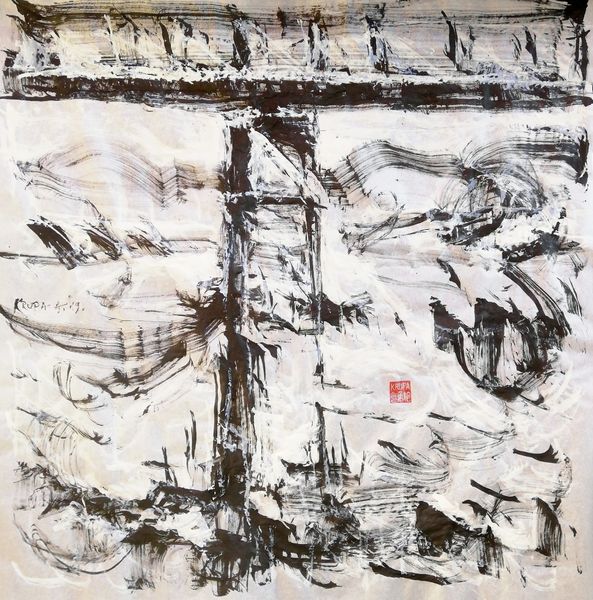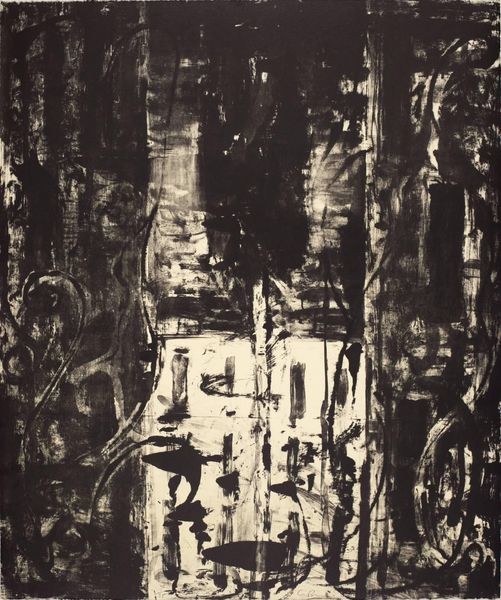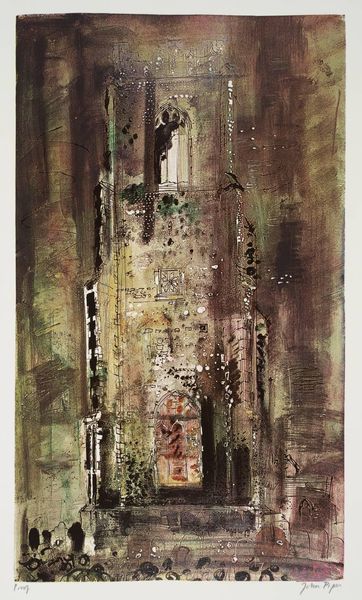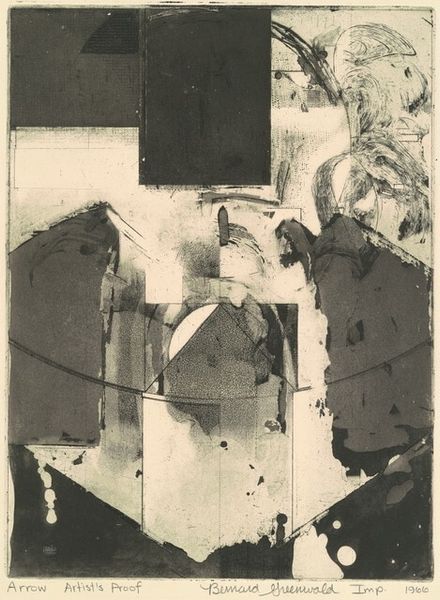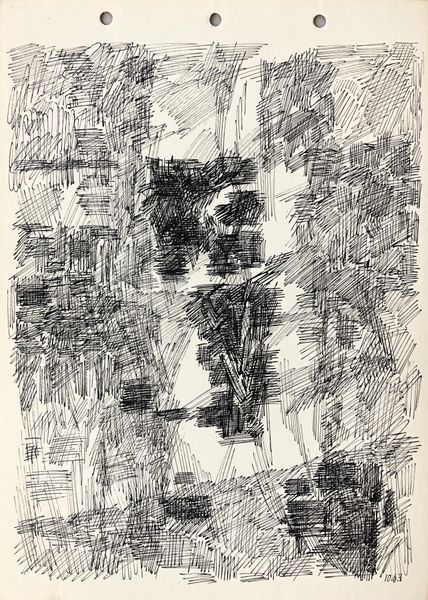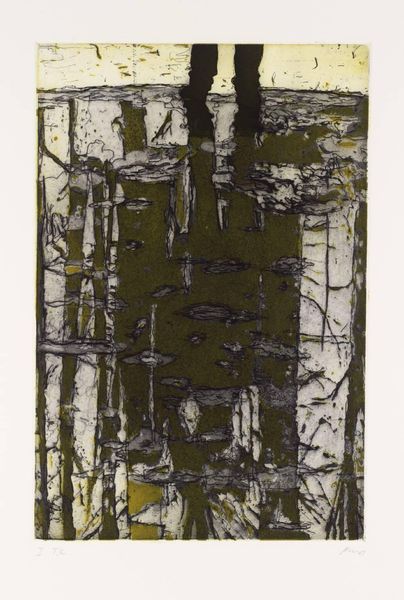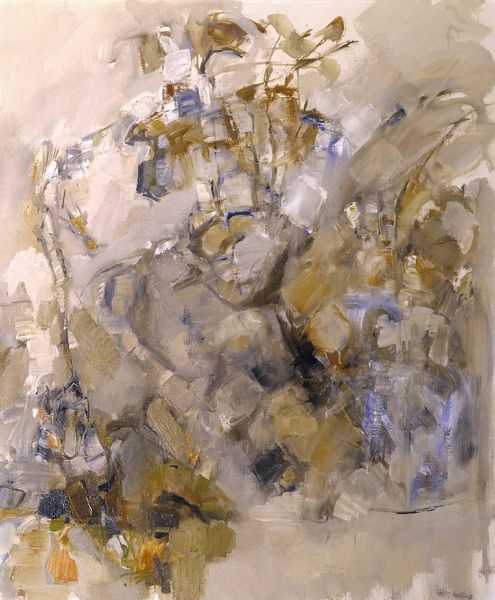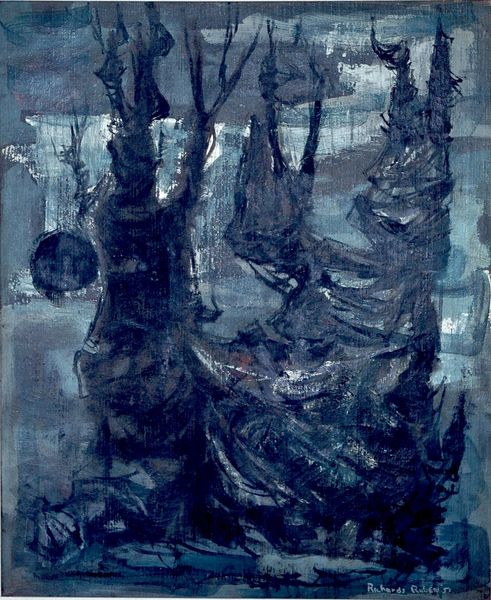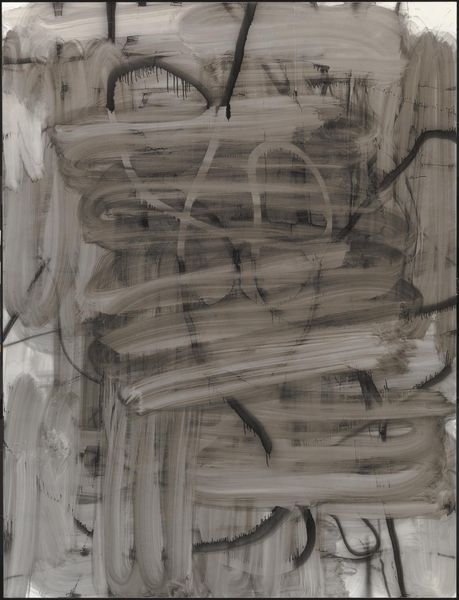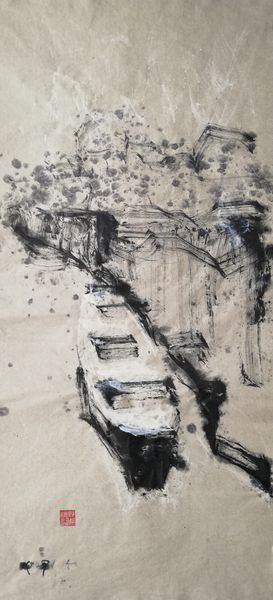
drawing, watercolor, ink
#
drawing
#
contemporary
#
landscape
#
watercolor
#
ink
#
geometric
#
orientalism
#
watercolor
Copyright: Creative Commons NonCommercial
Curator: Alfred Freddy Krupa created this compelling work, “On Sava River,” in 2017, utilizing ink and watercolor in a drawing format. What strikes you first about this piece? Editor: The dynamism of the strokes really catches the eye. The contrast between the dark ink and the white of the paper creates a strong visual energy; there's something almost raw and unfinished about the work that draws me in. Curator: Indeed. And there's more than meets the eye when considering Krupa's work. While rooted in the tradition of landscape, “On Sava River” reflects post-Orientalist sentiments that challenge Western gaze by reclaiming Eastern narratives and artistic agency through its expressive brushwork. It asks who gets to represent "place," especially considering colonial and patriarchal implications inherent in historical landscape art. Editor: Absolutely. It is crucial to consider that the materiality speaks volumes here. The use of ink and watercolor—materials often associated with traditional Asian art—emphasizes a connection to place, labor, and history. The handmade aspect creates a relationship with nature—considering that it is about Sava river–rather than objectifying it through mechanical means. The rough, expressive brushstrokes further highlights this interaction with the physical materials. Curator: It's powerful how Krupa subverts traditional artistic expectations using what may be considered "Orientalist" means for decidedly non-Orientalist ends. The visible brushstrokes challenge Eurocentric notions of what is ‘finished’ or refined in art, embracing instead the fluidity of identity and culture—resisting fixed narratives often associated with place and belonging. Editor: And the size of the artwork matters as well, I think, drawing from those traditions and making them a point for discussions. Its scale brings a tactile sensibility; it makes you want to get close to investigate and appreciate the way it was constructed as an artifact. Curator: I agree, the work encourages dialogue around identity, landscape representation, and questions inherent in cross-cultural aesthetics—inviting further critical discourse regarding the historical and political frameworks through which we perceive and categorize art. Editor: Ultimately, what strikes me is the intentional act of reclaiming artistic language itself as part of an effort to expand dialogues around production, consumption, and labor within the construction of identity and belonging. It transforms place itself into a critical statement on society.
Comments
No comments
Be the first to comment and join the conversation on the ultimate creative platform.
